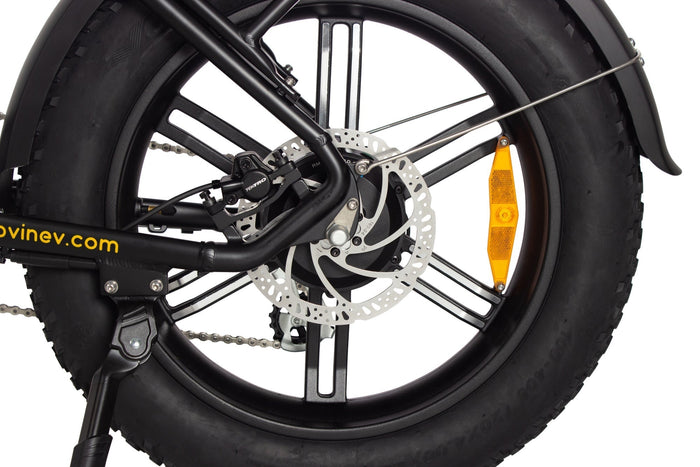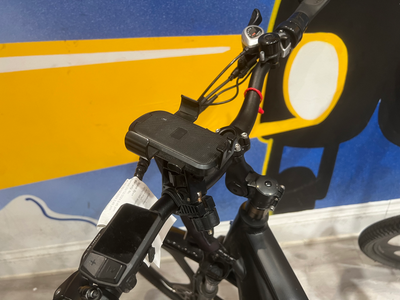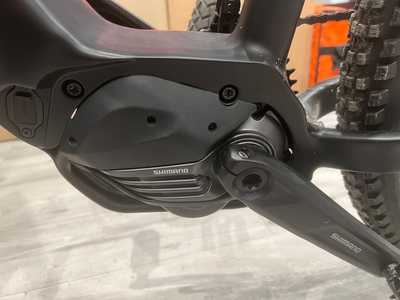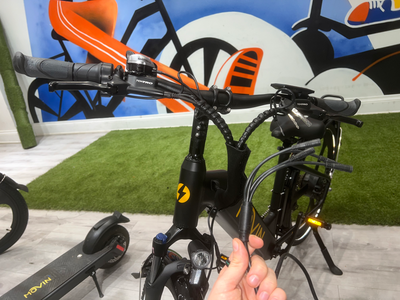E-bike sensor technology significantly enhances the riding experience by optimizing performance and providing a smoother, more intuitive ride through two main types of sensors: torque sensors and cadence sensors. Torque sensors measure the force applied to the pedals, offering a natural ride feel by adjusting motor assistance in real-time based on pedal force, which conserves battery and ensures smooth power delivery. They come in types like bottom bracket and rear hub torque sensors. In contrast, cadence sensors detect the pedal's rotational speed, providing consistent power output based on pedal rotation, and are simpler and less expensive but can feel less natural and cause jerky starts. They include magnetic and Hall effect sensors. Some advanced e-bikes combine both sensor types to leverage their benefits, resulting in a more refined and responsive ride. Overall, sensor technology is vital for enhanced control, battery efficiency, and an improved user experience, making it crucial for choosing the right e-bike to suit individual riding styles and preferences.
Sensors have a profound impact on e-bike performance and rider experience by providing precise control over motor assistance, leading to smoother and more responsive rides. Torque sensors, which measure pedal force, offer a natural and intuitive riding feel by adjusting power based on how hard the rider pedals, thereby enhancing efficiency and reducing battery consumption. Cadence sensors, on the other hand, detect pedal speed and deliver consistent power output, making them simpler and more cost-effective, though they might result in less natural power delivery. Advanced e-bikes often use a combination of both sensor types to optimize performance, ensuring a seamless integration of power that enhances overall ride quality. This refined control over motor assistance not only improves battery efficiency but also significantly enhances the rider's experience, making the e-bike feel more like a traditional bike while providing the benefits of electric assistance.

Cadence Sensor vs Torque Sensor
| Cadence Sensor | Torque Sensor | |
| Definitions | A cadence sensor detects the rotational speed of the pedals (how fast the rider is pedaling). It provides motor assistance based on the pedal rotation speed, ensuring that the motor delivers consistent power output once the pedals are moving. | A torque sensor measures the force applied to the pedals. It adjusts motor assistance in real-time based on the amount of force exerted by the rider, providing power proportional to pedal force for a more natural and intuitive riding experience. |
| Function | Detects the rotational speed of the pedals. | Measures the force applied to the pedals |
| Operation | Measures how fast the rider is pedaling (RPM) | Detects the amount of pressure the rider applies to the pedals. |
| Power Delivery | Provides consistent motor assistance based on the pedal rotation speed. | Adjusts motor assistance in real-time based on the force exerted, providing power proportional to pedal force. |
| Response Time | Typically has a slight delay in power delivery as it waits for pedal rotation. | Immediate power delivery as it responds directly to pedal force. |
| Ride Feel | Can feel less natural as power delivery is not proportional to the pedal force. | Offers a more natural and intuitive riding experience, similar to a traditional bike. |
| Battery Efficiency | Generally less efficient as it may provide power even when minimal pedal force is applied. | More efficient as it only provides assistance when significant pedal force is detected, conserving battery life. |
| Smoothness | The power delivery can be less smooth compared to torque sensors. Since assistance is triggered by pedal rotation rather than pedal pressure, there can be a slight delay in power delivery when starting or stopping pedaling, resulting in a less natural feel. | The ride is generally smoother with torque sensors because the motor assistance varies in direct correlation with the rider's pedaling effort. This means smoother transitions when changing speeds or pedaling intensity. |
| User Experience | Riders might experience a more mechanical or "on-off" sensation, as the motor doesn't adjust its output based on the rider's effort but simply on whether the pedals are turning or not. This can be particularly noticeable on steep inclines or when accelerating from a standstill. | Riders often report a more intuitive and natural riding experience, as the motor support feels like an extension of their own effort. This makes torque sensor-based e-bikes particularly popular for those looking for a ride experience similar to a traditional bicycle but with added power when needed. |
| Battery Consumption | This can lead to higher battery consumption, especially in situations where the rider is pedaling lightly but still receiving full motor assistance. Because the motor output does not adjust to the rider's effort, it can drain the battery more quickly, particularly on long rides or hilly terrains | This leads to more efficient battery usage as the motor assistance is precisely calibrated to the rider's needs. By providing power only when necessary, torque sensors help conserve battery life, allowing for longer rides and less frequent recharging. |
| Efficiency | Cadence sensors can be less efficient in terms of battery usage since the motor may provide unnecessary assistance, leading to more frequent recharges and shorter overall range per charge. | Torque sensors generally result in better battery efficiency because they prevent overuse of motor power, aligning the assistance closely with the rider's actual needs. This results in extended range per charge, particularly beneficial for longer commutes or rides in varied terrain |
| Riding terrains (styles) | Cadence sensors are ideal for urban and commuting rides, providing consistent motor assistance based on pedal rotation, which is beneficial in flat, urban environments with frequent stops and starts. This type of sensor delivers predictable power, making it easier to navigate city traffic and providing a relaxed riding experience for leisurely rides on flat terrain. However, cadence sensors might struggle on hilly or varied terrains due to their lack of responsiveness to the rider’s effort, potentially leading to inefficient power usage and quicker battery drain in such conditions | Torque sensors are well-suited for hilly and varied terrains, as well as for fitness and performance riding, due to their ability to adjust motor assistance based on the force applied to the pedals. This results in a more natural and efficient power delivery, making it easier to climb hills and cover long distances. For long-distance touring, torque sensors offer efficient battery usage by providing power only when necessary, aligning closely with the rider's effort. This responsive power delivery enhances the overall riding experience, making torque sensors ideal for riders seeking a dynamic and versatile ride across diverse terrains |
| Price | Cadence sensor-equipped e-bikes are generally more affordable, making them an attractive option for budget-conscious buyers. In Toronto, you can find decent e-bikes with cadence sensors for less than $1500. The simpler technology and lower production costs contribute to their affordability. These e-bikes are ideal for casual riders and commuters who prioritize cost savings and straightforward functionality. However, they may have limitations in terms of ride smoothness and battery efficiency, often resulting in faster battery drain and a less natural riding feel compared to torque sensor models | E-bikes with torque sensors are typically found in the mid-range to high-end market, with prices starting around $2000 in Toronto. The advanced technology used in torque sensors provides a more responsive and natural riding experience by adjusting motor assistance based on the rider's pedaling force. This leads to better battery efficiency and longer range, as the motor uses power more judiciously. Torque sensor e-bikes are ideal for riders who seek a dynamic, smooth, and intuitive ride, especially on varied terrains and for long-distance rides. Despite the higher upfront cost, the improved ride quality and efficiency offer significant value, especially for frequent riders or those tackling challenging routes |

Customer Reviews and Satisfaction Rates
Cadence Sensor E-Bikes: Cadence sensor e-bikes are generally well-received for their affordability and simplicity. They are particularly favored by casual riders and those using e-bikes for short commutes in flat, urban environments. Users appreciate the straightforward operation and the consistent power delivery once the pedals start moving. However, some common criticisms include the "on-off" nature of the motor assistance, which can feel jerky and less natural compared to torque sensors. This can lead to a less smooth ride, especially noticeable when starting from a stop or when there are frequent changes in pedaling speed. Overall, cadence sensor e-bikes are valued for their ease of use and lower price point, making them a popular choice among budget-conscious buyers and beginners (Electric Bike Reviews)
Torque Sensor E-Bikes: Torque sensor e-bikes tend to receive higher satisfaction ratings due to their more responsive and intuitive riding experience. Riders appreciate the natural feel of the power assistance, which adjusts in real-time based on pedaling force. This makes these e-bikes particularly suitable for varied terrains and longer rides, providing smoother transitions and better control. The primary downside noted by users is the higher cost, as torque sensor e-bikes are generally more expensive than their cadence sensor counterparts. Despite the higher price, many customers find the enhanced riding experience and improved battery efficiency worth the investment. These e-bikes are especially popular among cyclists who want a ride that closely mimics traditional biking with the added benefit of electric assistance (Electric Bike News and Reviews)
Future Trends in E-Bike Sensor Technology
Future trends in e-bike sensor technology are geared towards enhancing precision, responsiveness, and integration. The combination of torque and cadence sensors in advanced e-bikes aims to offer both immediate motor engagement and smooth power delivery, optimizing the riding experience across various terrains. Improvements in sensor accuracy and the adoption of smart connectivity through IoT will enable features like remote diagnostics, personalized performance settings, and real-time updates. These advancements will also contribute to better energy efficiency, extending battery life and range. Additionally, adaptive learning systems will tailor motor assistance based on rider habits, while safety enhancements such as collision detection and automatic braking will improve overall rider safety. These developments promise to make e-bikes more intuitive, efficient, and safer, appealing to a wider range of users





